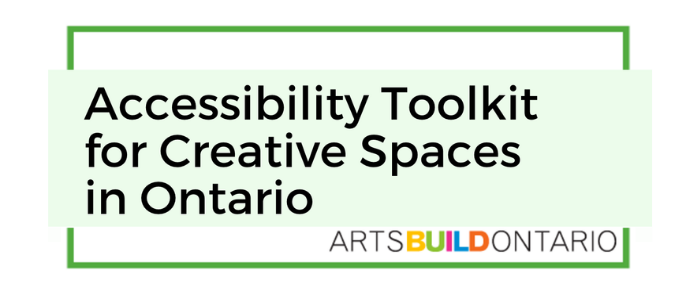 May 19th is Global Accessibility Awareness Day! There are many factors to consider for inclusive, accessible creative spaces; from making a physical space wheelchair accessible and ensuring ASL interpretation for public events, to all-gender restrooms and sliding-scale ticketing, there are many opportunities to ensure creative spaces are accessible.
May 19th is Global Accessibility Awareness Day! There are many factors to consider for inclusive, accessible creative spaces; from making a physical space wheelchair accessible and ensuring ASL interpretation for public events, to all-gender restrooms and sliding-scale ticketing, there are many opportunities to ensure creative spaces are accessible.
Improving the accessibility of a space depends on the different structures in place across four operating models that arts organizations and their spaces generally work within:
- Space is independently owned and operated
- Space is privately owned and independently operated
- Space is government owned and independently operated
- Space is government owned and operated
Organization size, funding structures, and general organizational needs are all factors that impact how spaces define accessibility.
So, where to start?
ArtsBuild Ontario has created a toolkit to provide you and your organization with a place to start in making accessible creative spaces. In this toolkit, we provide some basic resources about accessibility legislation in Ontario, including the AODA and Design of Public Spaces Standards, Ontario Building Code and Human Rights Code. Additionally, resources are available that help to provide accessible communications and service providers for American Sign Language (ASL) and interpretation, audio descriptions, closed captioning, and transcriptions.
This toolkit is also available in both English and French.
For more resources on making your space more accessible, check out this webinar ABO presented in and learn how to assess, communicate, and put venue accessibility into practice.

